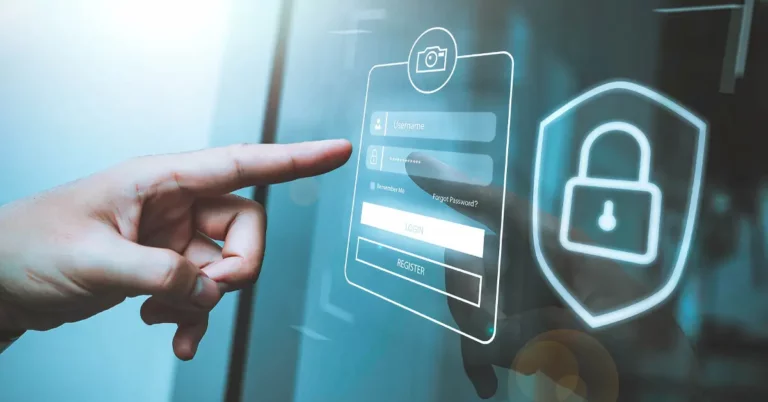Remote Patient Monitoring (RPM) is a transformative force in modern healthcare, offering a path to more proactive, continuous, and patient-centered care. However, its successful implementation is not without obstacles. Healthcare organizations must navigate a complex landscape of technical hurdles, data management issues, patient adherence barriers, and financial considerations.
These challenges impact both the care team and the patients they serve, and addressing them strategically is the key to unlocking the full potential of RPM. By understanding each barrier and implementing proven solutions, health systems can build sustainable, effective programs that improve outcomes, enhance efficiency, and define the future of healthcare delivery.
Technical Challenges and Their Solutions
Technical issues often present the first and most significant barrier to a smooth RPM deployment. From ensuring devices can communicate with each other to managing the massive influx of data, overcoming these hurdles is foundational to a program’s success.
Interoperability
A major technical challenge is the lack of interoperability between different RPM devices, software platforms, and a hospital’s Electronic Health Record (EHR) system. When these systems can’t communicate, clinicians are forced to work with fragmented data across multiple logins, creating inefficient workflows and increasing the risk of errors.
Solution: The most effective solution is to prioritize RPM platforms that are built with seamless EHR integration at their core. By using modern Application Programming Interfaces (APIs) and adhering to data standards like HL7 FHIR, these systems ensure that patient data flows automatically and securely into the EHR. This creates a single, unified patient record, streamlining workflows and providing a holistic view for better clinical decisions.
Reliability and Connectivity
An RPM program is only as reliable as its connection. Patients living in rural or low-income areas may lack access to stable broadband internet, leading to intermittent or failed data transmissions. This not only compromises the integrity of the monitoring program but also creates significant health equity gaps.
Solution: To bridge this digital divide, the best practice is to provide patients with cellular-enabled RPM devices. These devices come pre-configured and have their own connectivity, bypassing the need for a patient’s home internet or smartphone. This ensures that data transmission is consistent and reliable for all patients, regardless of their location or socioeconomic status.
Patient Technological Literacy
Some patients, particularly older adults or those with limited technical experience, may find RPM devices intimidating or difficult to use. Challenges with setup, troubleshooting, or simply remembering how to use the equipment can lead to frustration, inconsistent use, and eventual abandonment of the program.
Solution: A successful program must be designed for ease of use. This involves providing devices that are simple, intuitive, and require minimal patient setup. Combining this with a comprehensive onboarding program, clear instructions, and a dedicated patient technical support line ensures that individuals feel confident and supported throughout their monitoring journey.
Data Overload
While rich in clinical value, the continuous stream of data from hundreds of patients can quickly overwhelm care teams. This leads to alert fatigue, where clinicians become desensitized to frequent notifications, increasing the risk that a truly critical event is missed. This constant data management is a primary contributor to clinician burnout.
Solution: The key is to adopt an RPM platform that uses Artificial Intelligence (AI) to intelligently filter data. These systems can analyze incoming information, suppress non-actionable alerts, and prioritize events that are clinically significant. This allows clinicians to practice “management by exception,” focusing their time and energy only on the patients who need it most.
Data Management Challenges and Their Solutions
Once the data is collected, it must be managed with the highest standards of accuracy, security, and privacy to be clinically useful and compliant.
Data Accuracy
The clinical value of RPM is entirely dependent on the accuracy of the data collected. Inaccurate readings, whether from device malfunction or patient error (e.g., improper blood pressure cuff placement), can lead to flawed clinical decisions and compromise patient safety.
Solution: Organizations should exclusively use FDA-cleared medical devices known for their clinical accuracy. This should be paired with robust patient education during onboarding to ensure proper use. Advanced RPM platforms also have algorithms that can detect and flag anomalous readings that deviate significantly from a patient’s baseline, prompting a review to ensure validity.
Secure Data Storage and Transmission
Transmitting sensitive patient health information over the internet creates significant cybersecurity vulnerabilities. Protecting this data from breaches and unauthorized access is a critical legal and ethical responsibility.
Solution: It is essential to partner with a HIPAA-compliant RPM vendor that employs a multi-layered security strategy. This must include end-to-end encryption for all data, both in transit and at rest. Other crucial security measures include secure cloud infrastructure, regular vulnerability assessments, and strict role-based access controls to ensure data is protected at every stage.
Other Key Challenges and Their Solutions
Beyond the technical aspects, successful RPM programs must address human factors, financial realities, and the complex regulatory environment.
Patient Adherence
Even with easy-to-use technology, maintaining patient motivation for consistent, long-term monitoring can be challenging. Without daily adherence, gaps in the data can form, reducing the program’s effectiveness.
Solution: Long-term adherence is driven by engagement. This is achieved through consistent communication and feedback from the care team. When patients see their progress, receive positive reinforcement, and feel connected to their providers, they are far more likely to remain active participants in their own care.
Cost and Reimbursement
The initial investment in RPM technology and the ongoing operational costs can be a significant barrier for many organizations. Additionally, navigating the complex and evolving landscape of billing and reimbursement codes can be daunting.
Solution: The financial viability of RPM should be viewed through the lens of Return on Investment (ROI), as the cost is often quickly offset by preventing expensive hospitalizations. Crucially, major payers like Medicare and a growing number of state Medicaid programs now reimburse for RPM services, recognizing its value in managing chronic disease. To manage these billing complexities, partnering with a full-service RPM provider that offers expertise in navigating Medicare and Medicaid requirements is key to ensuring the program is financially sustainable.
Regulatory Compliance
Healthcare is a heavily regulated industry, and RPM programs must comply with a web of rules from HIPAA, CMS, the FDA, and various state-level bodies. Staying current with these evolving regulations requires dedicated resources and expertise.
Solution: The most efficient way to ensure compliance is to work with an experienced RPM partner who has a deep understanding of the regulatory landscape. A knowledgeable vendor will ensure their technology and service models are fully compliant, offloading this significant burden from the healthcare organization.
Integration with Healthcare Systems
Integrating a new RPM program into long-established clinical workflows and the existing EHR infrastructure is a complex undertaking that requires careful planning and change management.
Solution: Success requires a phased implementation approach, strong leadership buy-in, and clear communication. Partnering with an RPM vendor that provides clinical workflow consulting and robust integration support is crucial to ensuring the program becomes a seamless part of care delivery.
Patient Anxiety
For some individuals, the constant monitoring of a health condition can lead to increased stress or anxiety, as they may worry excessively about minor fluctuations in their data.
Solution: This can be mitigated through strong patient education and communication. It’s important to set clear expectations about what the data means, when to be concerned, and to reassure patients that the clinical team is there to interpret the information and provide support.
How DrKumo Addresses These Challenges
DrKumo’s secure, AI/ML-driven Remote Patient Monitoring platform is designed from the ground up to address the exact pain points healthcare organizations face when implementing RPM.
- Seamless Integration & Interoperability – Built with modern APIs and adherence to HL7 FHIR standards, DrKumo’s system integrates effortlessly with EHRs, creating a single source of truth for patient data.
- Reliable Connectivity – Cellular-enabled devices ensure consistent data transmission, even in rural or underserved areas, eliminating reliance on home internet.
- Patient-Friendly Technology – FDA-cleared devices are intuitive, pre-configured, and supported by a dedicated patient onboarding and tech support team.
- AI-Powered Data Management – Intelligent filtering reduces false alerts, prioritizing only clinically significant events to combat alert fatigue and optimize workflows.
- Robust Security & Compliance – Built on a federal healthcare-grade cybersecurity framework, DrKumo meets HIPAA, FIPS 140-3, and VA Directive 6500 standards, protecting sensitive patient information.
- Reimbursement Expertise – DrKumo provides full billing and reimbursement support, helping providers navigate Medicare, Medicaid, and private payer requirements.
With proven scalability and URAC accreditation, DrKumo empowers healthcare organizations to implement RPM programs that are both clinically impactful and operationally sustainable.
Takeaways
RPM has the potential to fundamentally change how healthcare is delivered, but only when its challenges are addressed head-on. From technical hurdles like interoperability and connectivity to human factors such as patient adherence and provider burnout, each obstacle requires a deliberate, well-structured solution. Leveraging AI for data filtering, choosing interoperable platforms, ensuring data security, and integrating seamlessly into existing workflows are not optional—they’re essential for sustainable success.
Organizations that proactively tackle these barriers can unlock RPM’s full benefits: improved patient outcomes, more efficient care delivery, and better cost management. The lesson is clear—RPM is not just about technology; it’s about designing a program that works for both providers and patients in the real world.
Don’t let technical, operational, or financial barriers hold your RPM program back. See how DrKumo’s intelligent, secure, and patient-friendly solutions can help you build a sustainable model for the future of healthcare. Contact us now!
Disclaimer: The information provided in this article is for general informational purposes only and does not constitute medical advice. Always seek the advice of a qualified healthcare professional regarding any medical condition or treatment plan.








